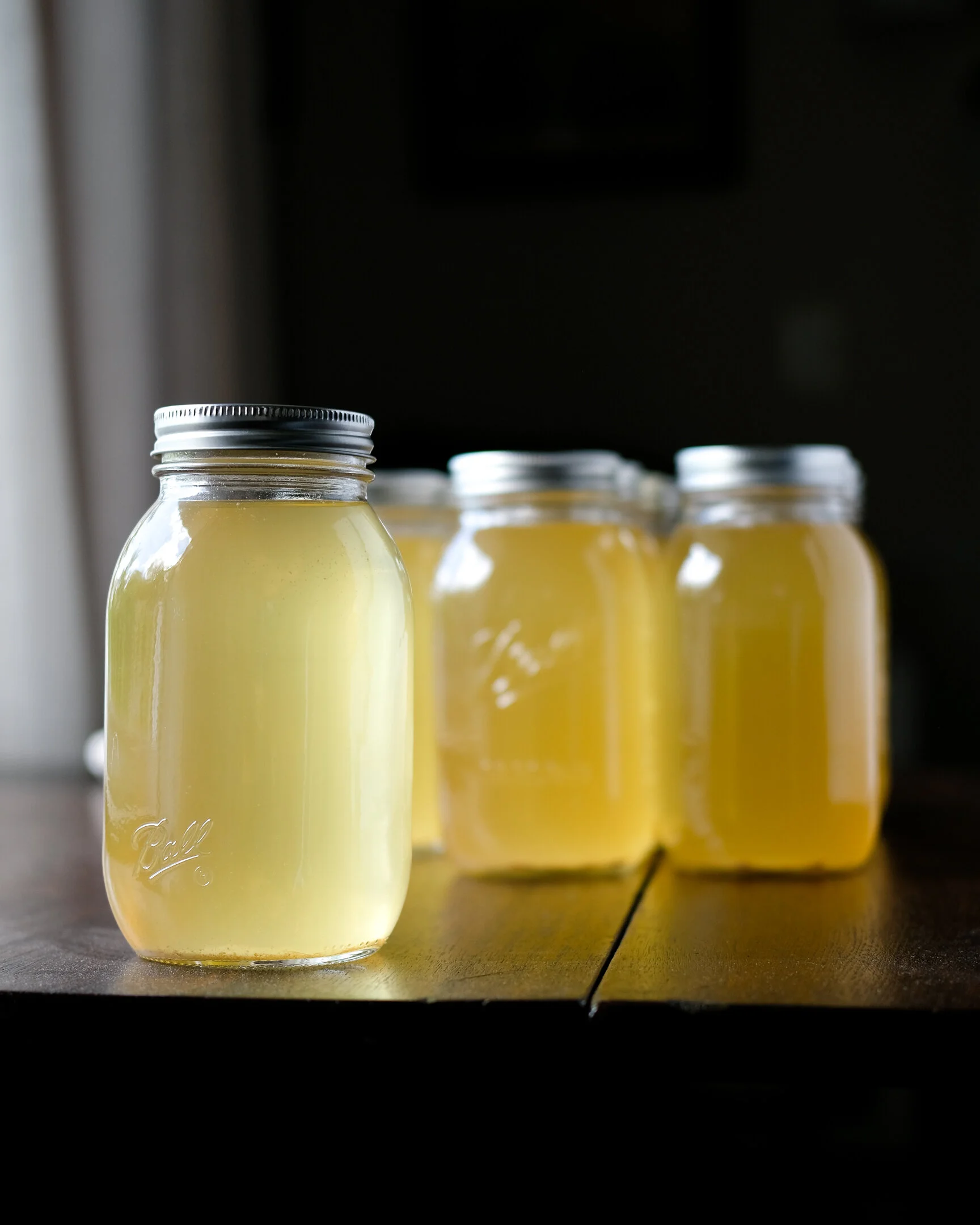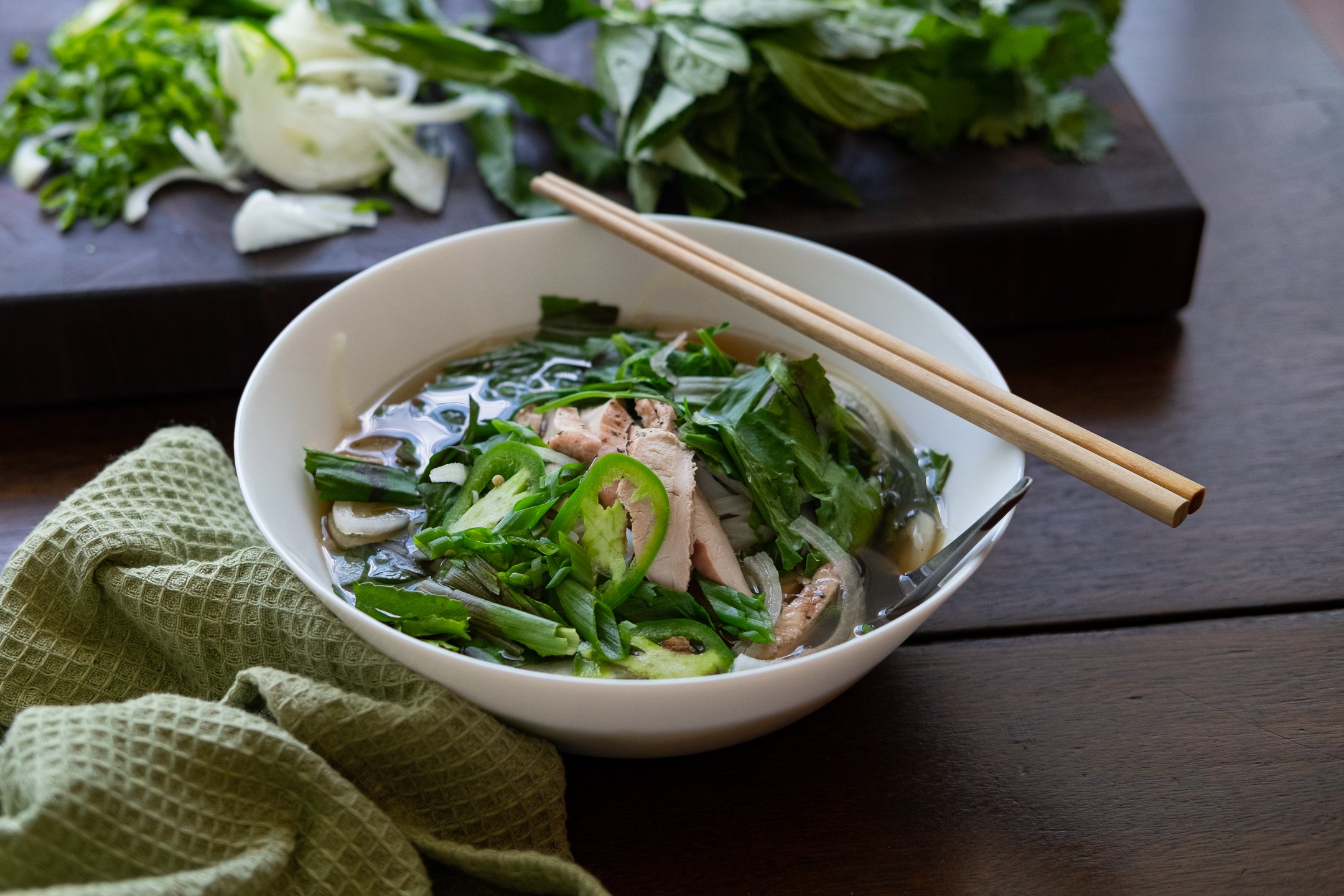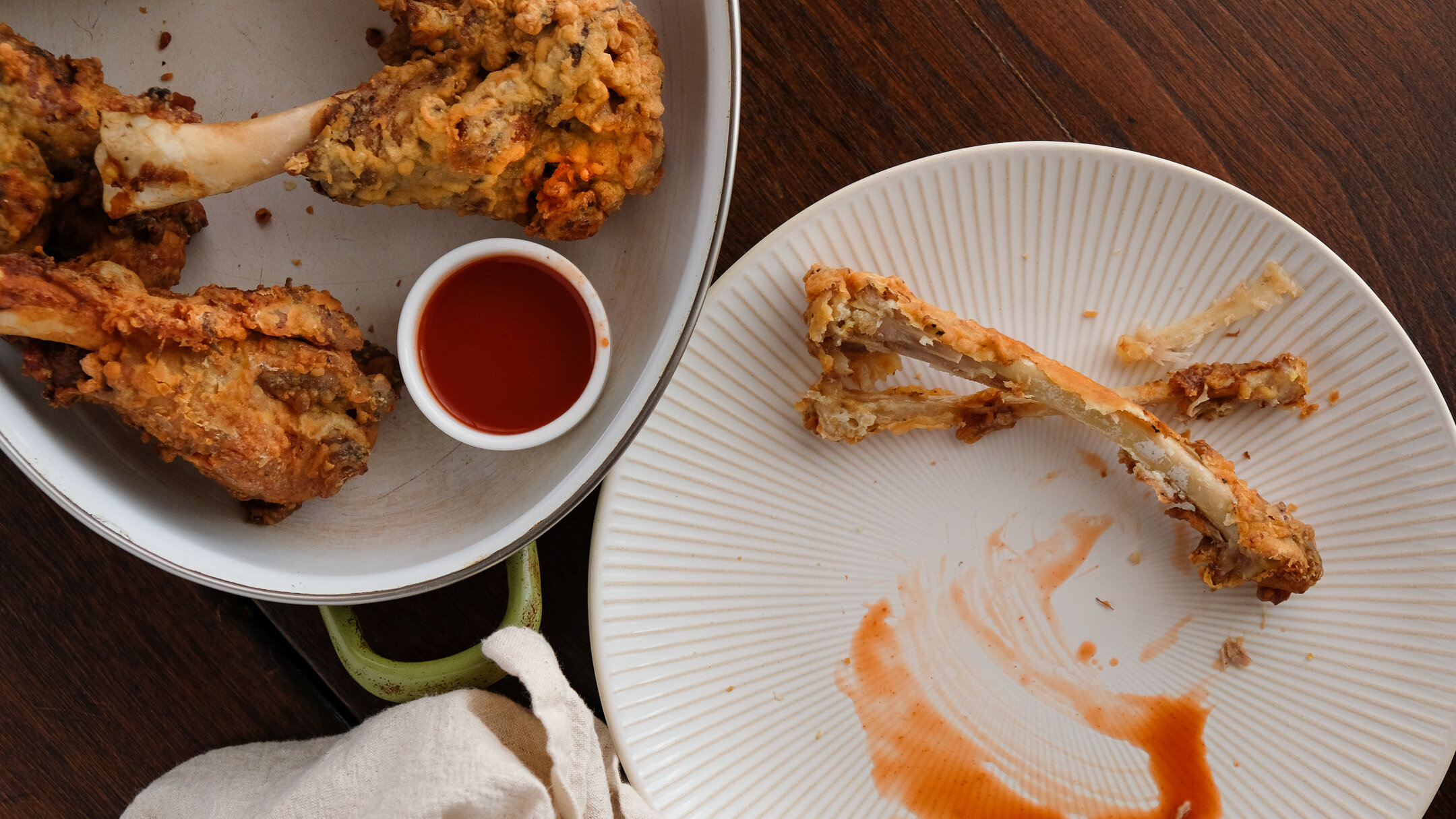Turkey White Stock Recipe

We have a wire shelf in our basement loaded with canned goods, most of which are various wild game stocks. We make stock from the bones and scraps of almost everything we pursue, it’s a way to make use of the bits that would be discarded, but also because stock is fundamental to so much of our cooking. In our opinion, you can't have too much stock.
For most of our stock, we roast the bones before simmering, to make what is called a brown stock. When the bones are not roasted it's a white stock, which, as the name implies, is lighter in color. Up until this season, the only time we made white stocks was for one-off dishes and seafood. But this season, we had an abundance of turkey bones and we wanted to pressure can some white stock for later use.
The traditional technique is pretty straightforward: cover the bones and scraps with water and simmer, skimming the solids and fats as they float to the top. The key to making clear, not cloudy, stocks (both brown and white) is to never bring the water to a boil. Boiling the stock allows fats and particles to emulsify which leads to a cloudy stock. We have made a slight change to this technique to cut down on the amount of skimming we do. But the basics are the same.

Turkey White Stock
Prep time: 15 minutes
Cook time: 4-8 hours

Ingredients:
Bones and scraps (trimmings, skin, sponge, feet, tendons) from 1 turkey
~2 gallons of water
Aromatics as you see fit (we used onion, celery, & bay leaf)
Method:
Put the bones in a large stock pot and cover with cold water. Over medium-high heat, bring to a rapid simmer, adjusting the heat to maintain the simmer for 5 minutes. During this time, all the blood and bits will start to float to the top.
Pour it all out, straining all the bones. Rinse out the stock pot- there will be some solids on the bottom as well as near the water line. Put the bones back in the pot. Add aromatics now if using. Cover with cold water and bring it to a very gentle simmer over medium/low heat for 4-8 hours.
The majority of the blood, fat and particles are now gone, so the stock will only need to be skimmed once before straining.
Skim and strain through a fine mesh sieve. Cool under refrigeration, uncovered. Cover once completely cooled.
The white stock should have a gelatinous texture when completely cooled and should be mostly free of floaty bits.


























